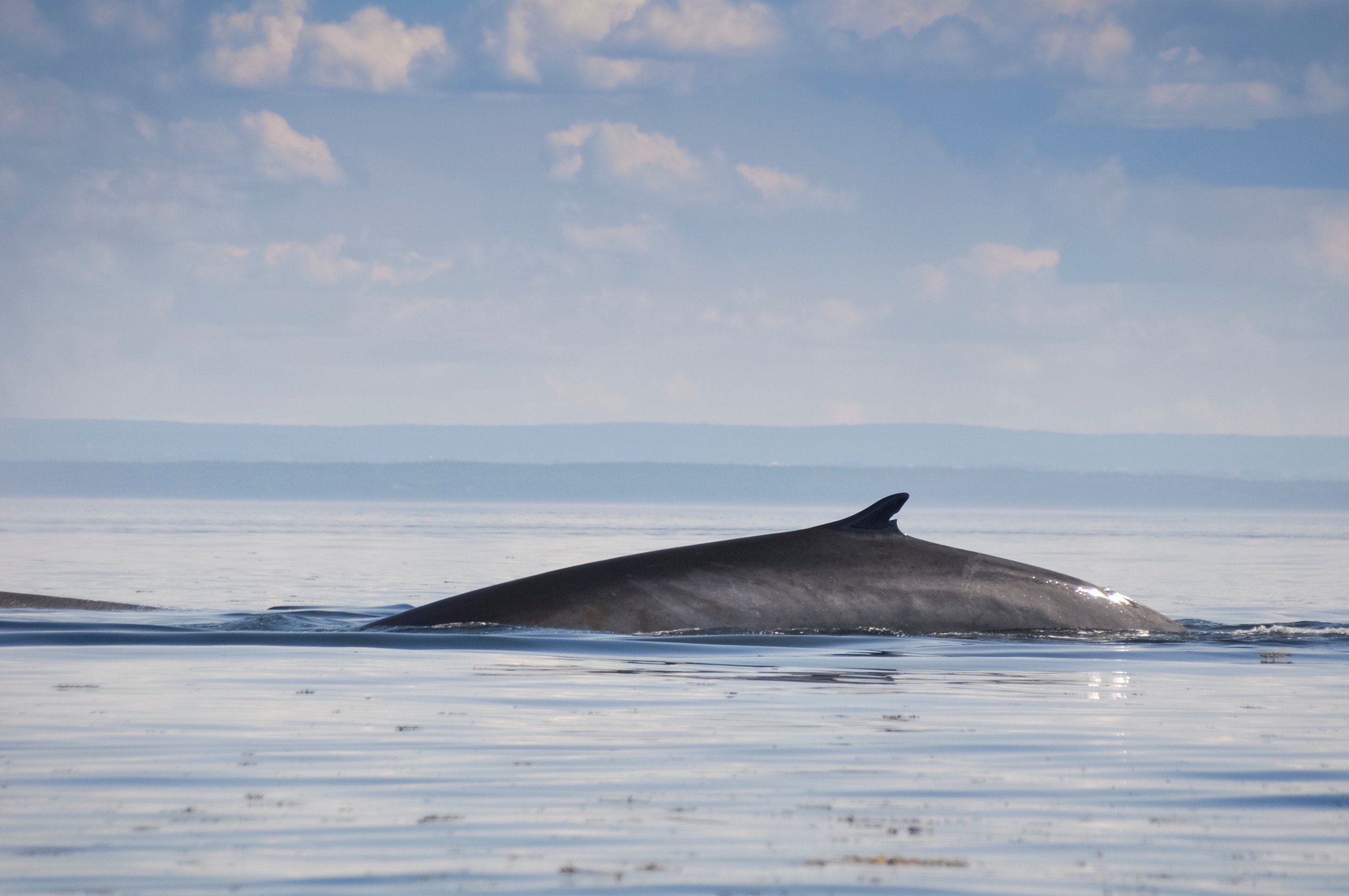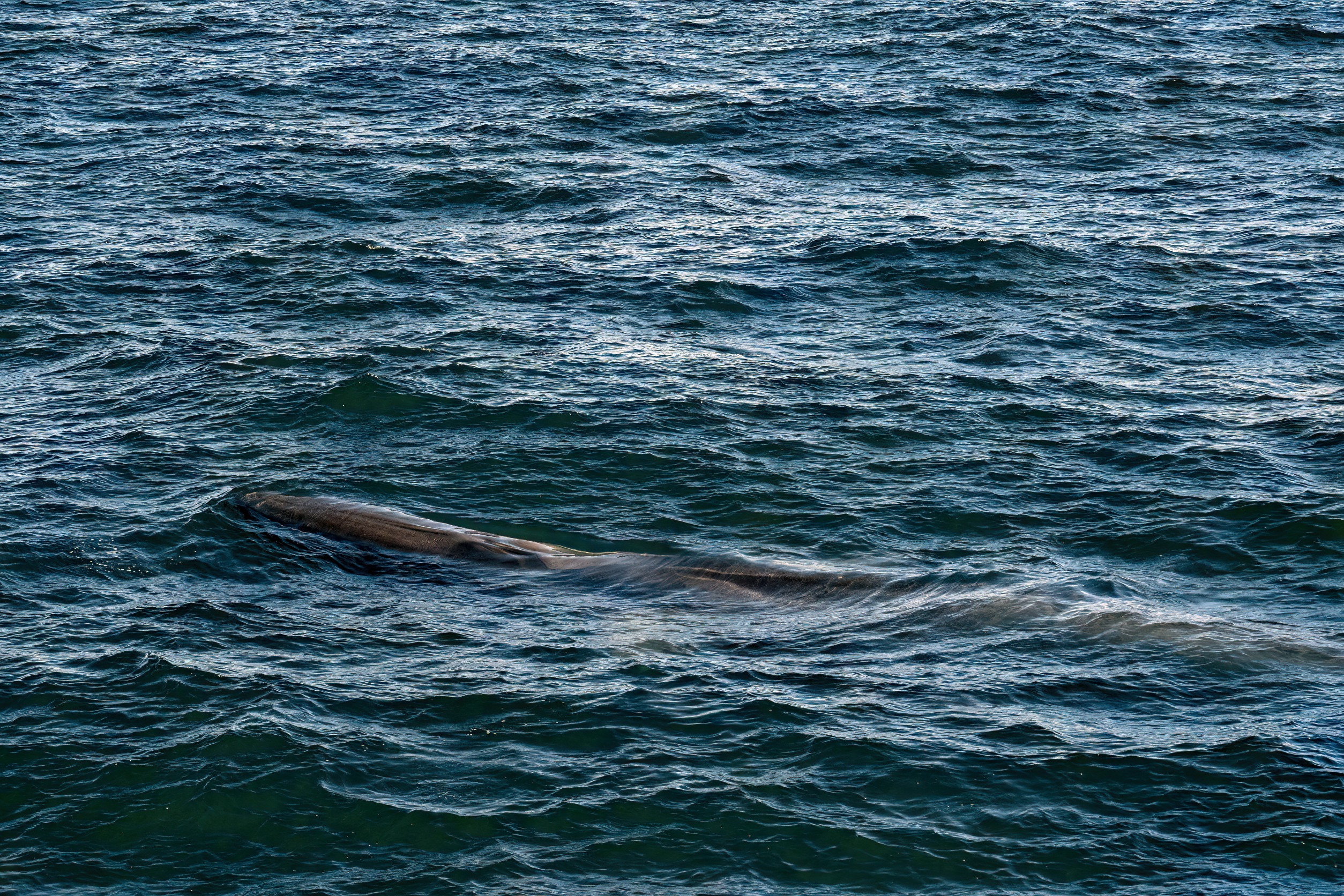A 52-FT Fin Whale Washes Up on Shore In San Diego

Fin whales are the second-largest whale species in the world, so it was devastating news when a massive 52-foot-long one washed up on a San Diego beach. Lifeguards towed the young female out to sea on December 10, 2023, where her body sunk to the bottom. While it is common to see a beached whale in California, dead Fin whale sightings are less common than others.
Devastating News
Thousands of whales and other marine mammals appear on beaches every year. In some cases, they are healthy. Other times, the animals are sick or injured and can be rehabilitated and released later. However, many times, the circumstances are far more tragic. Such is the case with the juvenile San Diego whale.
Fin whales are not a common sight on the California coast. Instead, they tend to stay in deeper, cooler waters further out. That made the discovery of a beach female Fin whale on San Diego’s Pacific Beach all the more tragic.
Observers notified the San Diego Fire-Rescue Department about the sighting at around 8:00 am on Sunday, December 10, 2023. The SDFD, in turn, informed the National Oceanic and Atmospheric Administration, which came out to investigate and oversee the return of the deceased whale to the sea.
What Causes a Whale To Beach?
Whales can beach for several reasons. Storms can cause the beaching of healthy animals, either alone or en masse. Another common contributor to mass strandings is quickly changing tides that can leave marine animals stuck in too-shallow water. There are also theories that underwater noise from maritime activity may confuse whales and cause them to beach themselves.
Sick, cold-stunned, or otherwise injured whales may come ashore on the tide. The same is true of deceased animals. In addition to standard illnesses, many whales are harmed by human activity. For example, fishing nets and boat propellers can injure whales, resulting in injury, death, and stranding.
Weighing between 35 and 40 tons, the juvenile beached whale had no visible injuries, and her cause of death is unknown. Hopefully, tissue samples taken by NOAA will provide a clue as to what caused the death of this magnificent creature. There are thoughts that she could have been impacted by the Offshore Orcas in the area. Only time will tell.

How Often Does a Whale Wash Up on Shore?
An estimated 2,000 whale strandings occur every year around the world. California typically sees between 10 and 20 strandings, although the numbers can be far higher during some years.
The most common type of beached San Diego whale is the gray whale. These large mammals are visible off the western coast from December to January as they make their way to breeding grounds near Baja, Mexico. They pass through again in the spring as they return to feeding areas further north. Massive blue whales are also found on the California coast and may occasionally beach themselves.
What You Should Do if You See a Beached Whale
If you see a beached whale, you should report it to the authorities immediately. This can be local lifeguards, the Coast Guard, or the fire and rescue department, as in the case of the stranded Pacific Beach whale. They will mobilize the necessary resources to address the stranding.
Time is critical for beached whales. If the animal is still alive, even a slight delay can lead to its death. Sadly, most whales washed ashore will not survive the ordeal.
A stranded whale is a devastating event. It is far more enjoyable to see one in its natural habitat. Whale-watching tours from San Diego make that possible. Learn more and book a trip today to catch a glimpse of these majestic animals off California’s coast.